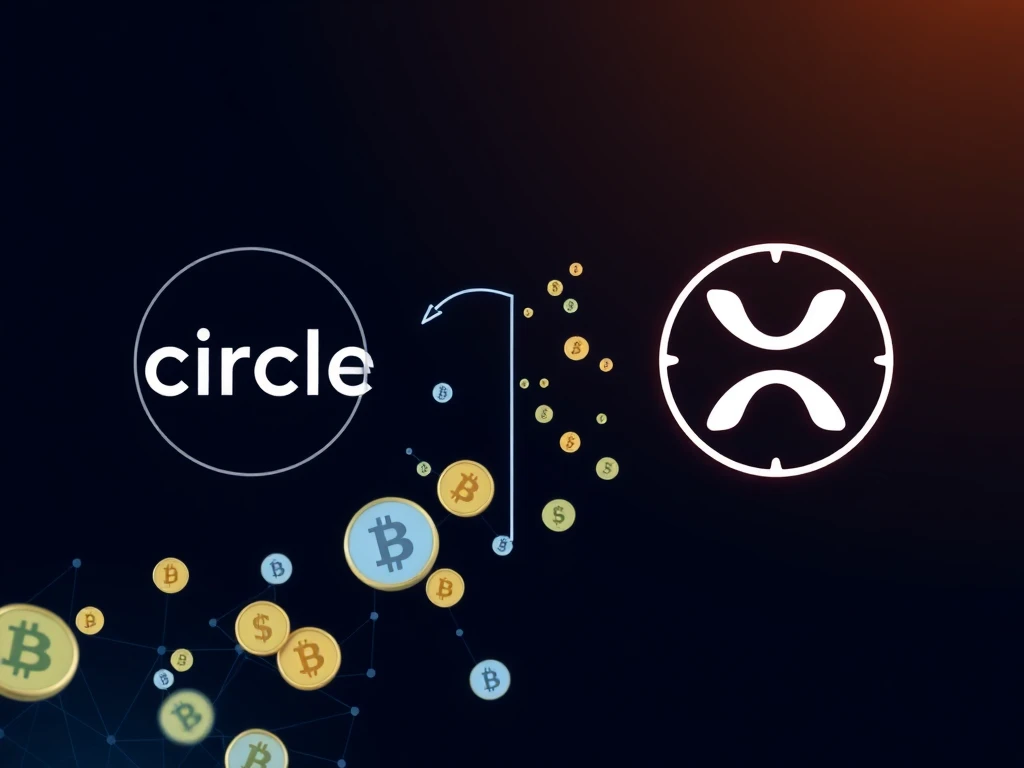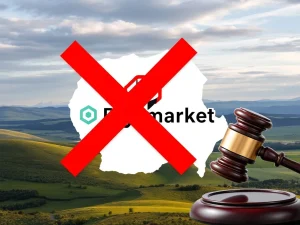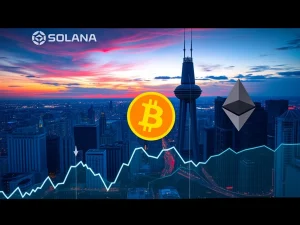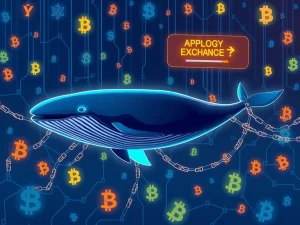Major USDC Stablecoin Arrives on XRP Ledger: What It Means

Exciting news for the crypto community! The popular USDC stablecoin, issued by Circle, has officially launched on the XRP Ledger. This integration is a significant development, bringing one of the largest stablecoins to the XRPL ecosystem and opening up new possibilities for users and developers.
USDC and the XRP Ledger: A New Partnership
Circle’s USDC, known for its overcollateralization and dollar peg, boasts a market capitalization exceeding $61 billion, making it the second-largest stablecoin globally. Its arrival on the XRP Ledger is set to enhance the network’s capabilities, particularly in decentralized finance (DeFi).
According to an announcement from Ripple, the integration includes an auto-bridging feature. This allows investors to use XRP as a bridge currency, facilitating seamless transfers of their stablecoins between decentralized exchanges (DEXs) built on the XRPL. This feature aims to improve liquidity and user experience within the ecosystem.
Why Stablecoins Matter for Connecting Finance
Markus Infanger, senior vice president at RippleX, highlighted the crucial role of stablecoins like USDC. He stated that stablecoins are essential entry points connecting traditional financial markets with the crypto space. They are seen as vital for use cases focused on utility, such as payments and remittances, rather than just speculation.
The launch comes as the stablecoin sector continues its rapid growth, now exceeding $237 billion in market capitalization. This growth is attracting significant attention from regulators and policymakers worldwide.
Stablecoins, Regulation, and the US Dollar
The support for USDC on the XRPL aligns with broader efforts to establish comprehensive stablecoin regulations, particularly in the United States. The increasing size and influence of the stablecoin market have significant geo-strategic and macroeconomic implications.
A key aspect of the stablecoin discussion revolves around their backing. Many overcollateralized stablecoin issuers, including Circle, purchase short-term US Treasury bills. This provides a stable reserve and generates yield.
Some US officials view stablecoins as a tool to bolster the global standing and salability of the US dollar. Amid concerns about de-dollarization and foreign countries potentially reducing their holdings of US government debt, stablecoins create demand for dollar-denominated assets (like Treasuries) as backing.
Rising US debt and elevated Treasury yields (like the 10-year yield currently over 4.3%) add complexity to the economic landscape. During a recent White House summit, US Treasury Secretary Scott Bessent reportedly emphasized prioritizing stablecoin development to protect US dollar hegemony by leveraging global demand for stablecoins.
Alternative Views on Stablecoins and the Dollar
Not everyone agrees that stablecoins can permanently secure the dollar’s future. Critics, such as Bitcoin advocate Max Keiser, argue that using stablecoins to prop up declining demand for the US dollar will only delay an inevitable decline. Keiser suggests that stable tokens backed by assets like gold could eventually outcompete dollar-pegged stablecoins. His reasoning centers on gold’s high stock-to-flow ratio, which he believes offers better protection against inflation and value depreciation compared to fiat currencies like the dollar.
Conclusion: What’s Next for USDC and XRPL?
The launch of USDC on the XRP Ledger is a notable event, bringing a major stablecoin to a prominent layer-1 blockchain. This integration is expected to enhance DeFi activities on the XRPL and could play a role in the ongoing global discussions about stablecoin regulation and the future of the US dollar in the digital age. While opinions differ on the long-term impact, the immediate effect is increased utility and accessibility for XRPL users.









